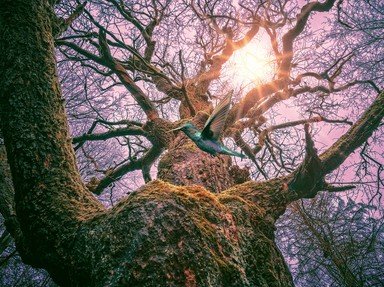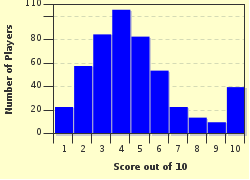Quiz Answer Key and Fun Facts
1. Which animal engages in brachiation?
2. In 2008 biologist Kenneth Dial published research which contained the first aerodynamic explanation of how dinosaurs evolved into birds. Which bird did Dial observe in coming up with his conclusions?
3. The open ocean is divided into five zones by depth, the middle zone of which is known as the bathypelagic (or bathyl) zone. Which group of sea creatures would you most likely find in this zone?
4. Which mammal was declared "functionally extinct" in 2006?
5. Protandry is a condition in which an animal is first a male and then becomes a female. While common in plants, it also, somewhat surprisingly, occurs in animals as well. Which of the following animals is protandrous?
6. Animals which are zygodactylus include parrots, cuckoos, and woodpeckers. What does it mean to be zygodactylus?
7. Perissodactyla is an order consisting of odd-toed ungulates, meaning they have an odd number of toes on each hoof. Which of the following animals is *not* a perissodactyl?
8. Which of the following mammals has no teeth?
9. A familiar, everyday saying can be rewritten as "surveillance should precede salientation". With that as a hint, which of the following animals would be included in the suborder known as Salientia?
10. Which animal does not drink?
Source: Author
chessart
This quiz was reviewed by FunTrivia editor
crisw before going online.
Any errors found in FunTrivia content are routinely corrected through our feedback system.


